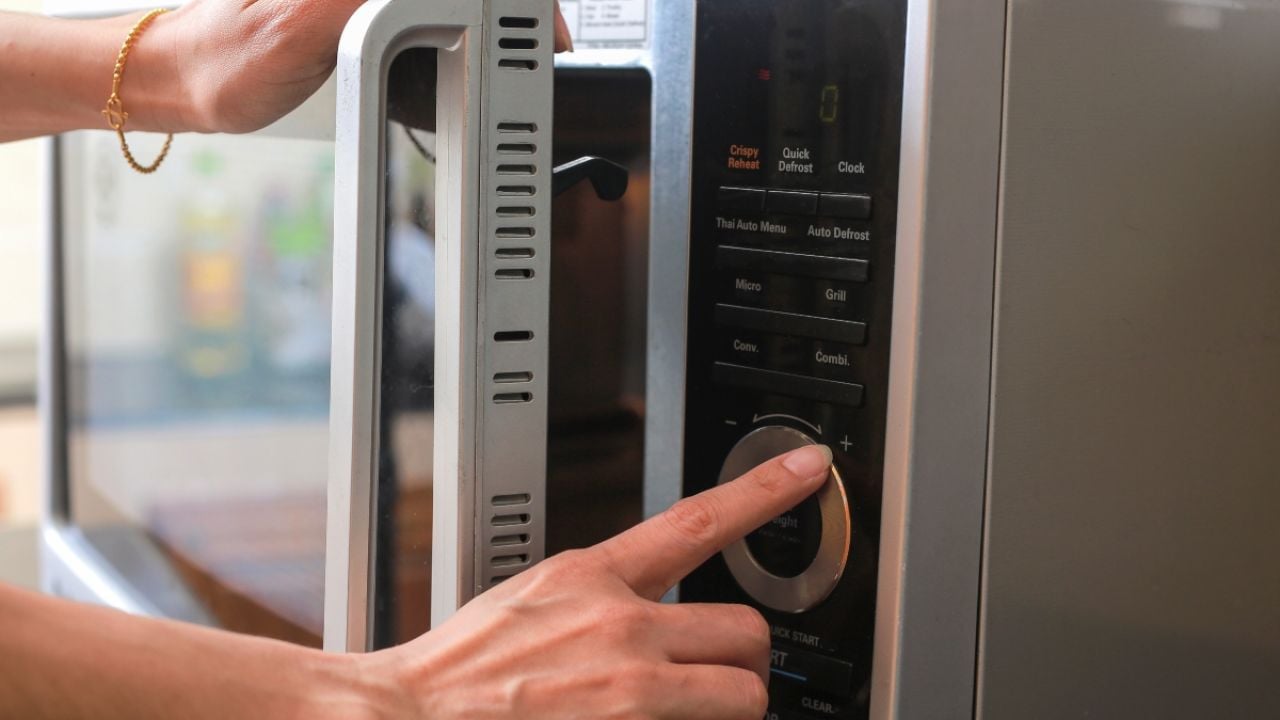
Frozen dinners can be helpful when you don’t have the time or energy to prepare a fresh meal – quick and easy, especially given their long freezer life. But some brands include toxic chemicals you don’t want to see on your dinner plate.
Next time you stock your freezer, look out for these harmful ingredients on the label.
TBHQ
Your freezer’s sub-zero temperature helps food last longer, but preservatives like TBHQ are often added to processed frozen foods.
Freezer dinners like Kikuet Lasagna Tacos and Black Label Little Sizzlers Original Pork Sausage could expose you to a range of health harms.
An EWG peer-reviewed study on the effects of TBHQ found it affects multiple cell types important for a healthy immune system. Scientific studies have found TBHQ may influence the effectiveness of flu vaccines and is linked to a rise in food allergies.
BHA and BHT
Butylated hydroxyanisole, or BHA, and butylated hydroxytoluene, or BHT, are two common food preservatives.
Both chemicals are found in many frozen foods, from beef-based dinners to burgers to burritos, including Digiorno Stuffed Supreme, Pep Bites and Ramona's Burritos with beef, chicken, hot green chili, potato and beef fillings.
The National Toxicology Program classifies it as “reasonably anticipated to be a human carcinogen.” It’s also listed as a known human carcinogen under California’s Proposition 65 product warning labeling program.
BHA can also disrupt the endocrine system, which is important for regulating growth and development, reproduction, metabolism, sleep, stress and immune response. Scientific research has shown that BHA may cause thyroid system damage, metabolic and growth disorders, and neurotoxicity.
BHT is similar to BHA and may also cause hormone disruption, affecting the thyroid and reproductive systems. Studies on mice found that exposure to BHT harmed development in early pregnancy.
Synthetic food dyes
Frozen foods sometimes get their color from synthetic food dyes like Yellow No. 5 and Yellow No. 6.
Freezer finds that contain these dyes include Tower Isle’s Jamaican-Style Hot Beef Patties and Chicken Patties, Golden Krust Jamaican Style Spicy Beef Turnover Patties and Las Campanas Red Chili & Cheese Burritos.
Synthetic food dyes have been linked to multiple health harms. They can increase behavioral and learning difficulties and restlessness in sensitive children, according to a 2021 study by the California Office of Environmental Health Hazard Assessment.
Artificial dyes affect each child differently. Scientists found that just one milligram of Yellow No. 5 can harm the most sensitive kids, with many colorful foods marketed to children containing 10 to 20 milligrams of a combination of dyes in one serving.
Government action (or inaction)
Despite growing concern over the safety of these chemicals, loopholes in Food and Drug Administration policies allow them to remain in use. A recent EWG study found that industry scientists – not the FDA – reviewed the safety of 99 percent of food chemicals added to the marketplace since 2000.
Interested parties may petition the FDA to review the safety of a chemical, but a final rule can take years, or even decades. A petition asking the FDA to ban the use of BHA in food has been under review since 1990.
The FDA approved Yellow No. 5 and Yellow No. 6 for use in foods with no restrictions in 1969 and 1986, respectively. The agency approved TBHQ for use in food in 1977. The FDA is not required to reconsider approval based on the latest science.
Congress isn’t advancing legislation that would address health concerns relating to these five chemicals. Some states aren’t waiting – they’re moving bills to remove toxic chemicals from food.
In California, Assemblymember Jesse Gabriel (D-San Fernando Valley) authored Assembly Bill 418, which would ban the manufacture, sale and distribution in the state of food containing five other harmful food chemicals: titanium dioxide, brominated vegetable oil, propyl paraben, potassium bromate and Red No. 3.
If the bill is signed into law, California would be the first state to remove these five toxic chemicals from candy, gum and popular food items. This type of state action would offer hope that more toxic chemicals will eventually be removed from our foods.
What you can do
While we await federal action to remove these chemicals from our food, we recommend:
- Read the label to avoid buying frozen food products with these ingredients.
- Choose organic foods that are held to stricter standards than non-organic alternatives. The Department of Agriculture does not permit the use of artificial colors in USDA-certified organic foods.
Use EWG’s Food Scores database to find frozen choices similar to your favorites but without harmful chemicals. It rates more than 80,000 food products based on ingredient, nutrition and processing concerns.



